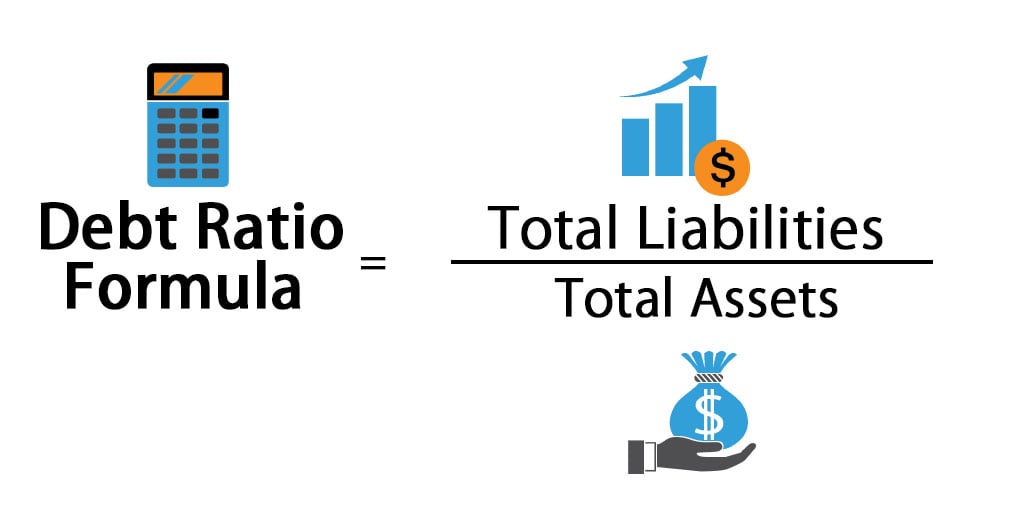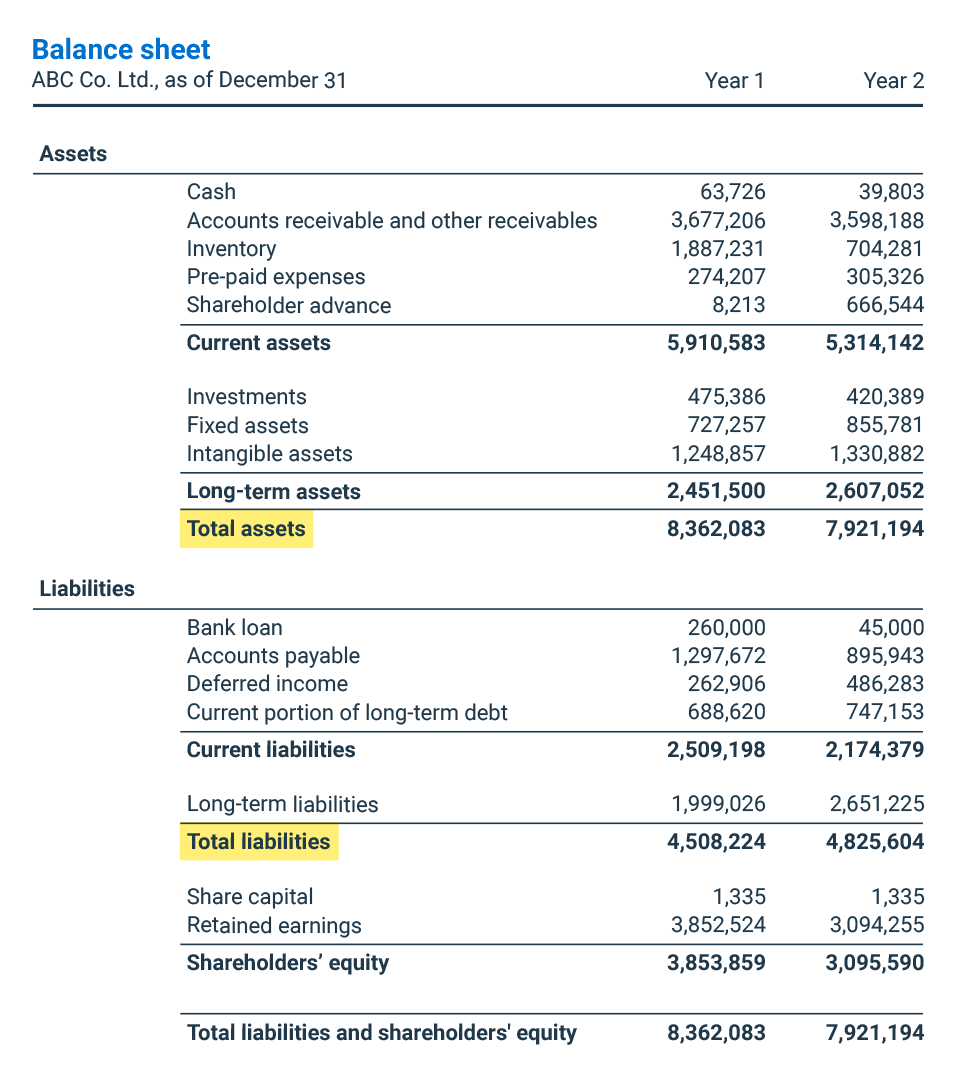
Having to make high debt payments can leave companies with less cash on hand to pay for growth, which can also hurt the company and shareholders. And a high debt-to-equity ratio can limit a company’s access to borrowing, which could limit its ability to grow. The interest rates on business loans can be relatively low, and are tax deductible. That makes debt an attractive way to fund business, especially compared to the potential returns from the stock market, which can be volatile.
Q. Can I use the debt to equity ratio for personal finance analysis?
Through these examples, it is clear that the debt-to-equity ratio provides invaluable insights into a company’s financial leverage and stability. In the next sections, we will explore how to interpret these results and use this ratio for comprehensive financial analysis. Total Liabilities encompass all the financial obligations a company has to external parties. It is crucial to ensure that all liabilities, both current and long-term, are accounted for when calculating the D/E Ratio. Current liabilities are obligations that are due within a year, whereas long-term liabilities are due after one year. This ratio indicates how much debt a company is using to finance its assets compared to equity.
What is the approximate value of your cash savings and other investments?
If the company fails to generate enough revenue to cover its debt obligations, it could lead to financial distress or even bankruptcy. The D/E ratio is a powerful indicator of a company’s financial stability and risk profile. It reflects the relative proportions of debt and equity a company uses to finance its assets and operations. Creditors view a higher debt to equity ratio as risky because it shows that the investors haven’t funded the operations as much as creditors have. In other words, investors don’t have as much skin in the game as the creditors do. This could mean that investors don’t want to fund the business operations because the company isn’t performing well.
What is considered a bad debt-to-equity ratio?
First, using the company balance sheet, pull the total debt amount and the total shareholder equity amount, and enter these numbers into adjacent cells (e.g. E2 and E3). Current liabilities are the debts that a company will typically pay off within the year, including accounts payable. The term “leverage” reflects the hope that the company will be able to use a relatively small amount of debt to boost its growth and earnings. Wise use of debt can help companies build a good reputation with creditors, which, in turn, will allow them to borrow more money for potential future growth. Debt to equity ratio (also termed as debt equity ratio) is a long term solvency ratio that indicates the soundness of long-term financial policies of a company.
Again, context is everything and the D/E ratio is only one indicator of a company’s health. Investors can use the debt-to-equity ratio to help determine potential risk before they buy a stock. As an individual investor you may choose to take an active or passive approach to investing and building a nest egg.
- The debt to equity ratio is a financial, liquidity ratio that compares a company’s total debt to total equity.
- An increase in the D/E ratio can be a sign that a company is taking on too much debt and may not be able to generate enough cash flow to cover its obligations.
- Investors may become dissatisfied with the lack of investment or they may demand a share of that cash in the form of dividend payments.
- Lack of performance might also be the reason why the company is seeking out extra debt financing.
- As noted above, the numbers you’ll need are located on a company’s balance sheet.
Step 1: Identify Total Debt
Investors who want to take a more hands-on approach to investing, choosing individual stocks, may take a look at the debt-to-equity ratio to help determine whether a company is a risky bet. Banks and other lenders keep tabs on what healthy debt-to-equity ratios look like in a given industry. A debt-to-equity ratio that seems too high, especially compared to a company’s peers, might signal to potential lenders that the company isn’t in a good position to repay the debt. It is possible that the debt-to-equity ratio may be considered too low, as well, which is an indicator that a company is relying too heavily on its own equity to fund operations. In that case, investors may worry that the company isn’t taking advantage of potential growth opportunities. The company can use the funds they borrow to buy equipment, inventory, or other assets — or to fund new projects or acquisitions.

While some very large companies in fixed asset-heavy industries (such as mining or manufacturing) may have ratios higher than 2, these are the exception rather than the rule. In the financial industry (particularly banking), a similar concept is equity to total assets (or equity to risk-weighted assets), otherwise known as capital adequacy. Ultimately, the D/E ratio tells us about the company’s approach to balancing risk and reward.
This is helpful in analyzing a single company over a period of time and can be used when comparing similar companies. It is important to note that the D/E ratio is one of the ratios that should not be looked at in isolation but with other ratios and performance indicators to give a holistic view of the company. If the D/E ratio gets too high, managers may issue more equity or buy back some of the outstanding debt to reduce the ratio. Conversely, if the D/E ratio is too low, managers may issue more debt or repurchase equity to increase the ratio. A good D/E ratio of one industry may be a bad ratio in another and vice versa. The loan is said to be invested in the Mexican and Colombian markets that will target technology development and product innovation, attract talent, and build up its customer base.
Also, this ratio looks specifically at how much of a company’s assets are financed with debt. The debt to equity ratio is a financial, liquidity ratio that compares a company’s total debt to total equity. The debt to equity ratio shows the percentage of company financing that comes from creditors and investors. A higher debt to equity ratio indicates that more creditor financing (bank loans) is used than investor financing (shareholders).
As a general rule of thumb, a good debt-to-equity ratio will equal about 1.0. However, the acceptable rate can vary by industry, and may depend on the overall economy. A higher debt-to-income ratio could be more risky workflowmax job and project management software in an economic downturn, for example, than during a boom. A company’s ability to cover its long-term obligations is more uncertain, and is subject to a variety of factors including interest rates (more on that below).
A high ratio may suggest higher financial risk, while a low ratio indicates less risk. We have the debt to asset ratio calculator (especially useful for companies) and the debt to income ratio calculator (used for personal financial purposes). If a company has a D/E ratio of 5, but the industry average is 7, this may not be an indicator of poor corporate management or economic risk. There also are many other metrics used in corporate accounting and financial analysis used as indicators of financial health that should be studied alongside the D/E ratio. Yes, the ratio doesn’t consider the quality of debt or equity, such as interest rates or equity dilution terms. A higher ratio suggests that the company uses more borrowed money, which comes with interest and repayment obligations.

Recent Comments